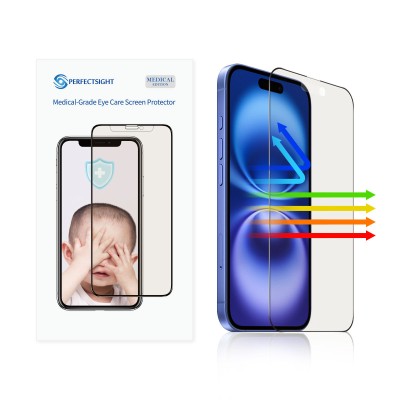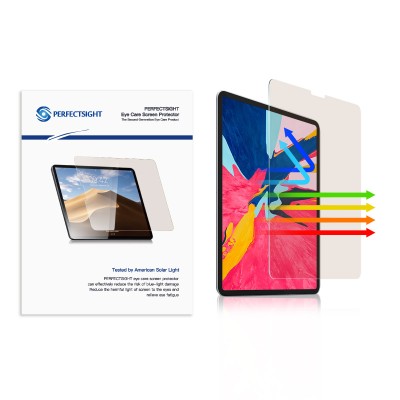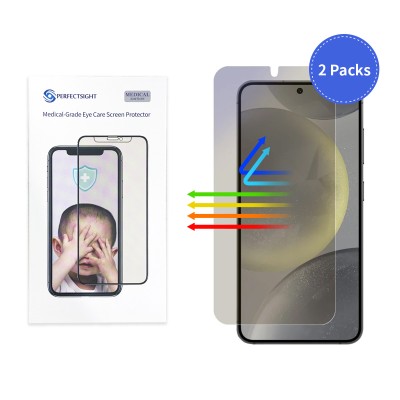Does Privacy Screen Protector Affect Display Quality?
As privacy concerns grow, more and more smartphone users are opting for privacy screen protectors to safeguard their sensitive information from prying eyes. While these accessories provide a much-needed layer of protection, many users wonder: Does a privacy screen protector affect display quality? In this blog post, we will dive deep into the impact of privacy screen protectors on your device's display and help you decide whether it's worth compromising on quality for added privacy.

What is a Privacy Screen Protector?
A privacy screen protector is a thin film or tempered glass designed to limit the visibility of your device's screen from side angles. Its primary purpose is to protect your private information from "shoulder surfing"—when others try to view your screen without your knowledge. These protectors work by using micro-louver technology, which narrows the viewing angle so that only someone directly in front of the screen can see the content clearly.
How Do Privacy Screen Protectors Work?
The technology behind privacy screen protectors is fairly simple yet effective. The protector features microscopic grooves or slits that filter the light emitted by your device's display. These grooves are aligned in such a way that the screen appears clear only when viewed from a direct angle, while those viewing from the side will see a dark or distorted screen. This helps ensure that your information remains visible only to you, even in public spaces.
However, as with any additional layer on your screen, there may be trade-offs when it comes to display quality. Let's explore how a privacy screen protector may impact the visual experience on your device.

How Does a Privacy Screen Protector Affect Display Quality?
1. Reduced Brightness and Clarity
One of the most noticeable effects of using a privacy screen protector is a reduction in screen brightness. Since these protectors use polarizing filters, they can dim the screen, especially in bright environments or under direct sunlight. This can make it harder to view your screen clearly in some situations, particularly if you're outdoors or in a well-lit room.
Additionally, some users report a slight reduction in clarity. The microscopic grooves or layers in the privacy screen may distort the screen's display, causing slight blurring or fuzziness. While this may not be very noticeable under normal use, it can be a bit of a hindrance if you're trying to watch videos or read fine text on your device.
Some high-quality privacy screen protectors minimize these issues, but it's important to remember that all screen protectors introduce some level of compromise.

2. Viewing Angle Limitation
As mentioned earlier, the primary function of a privacy screen protector is to narrow the viewing angle of the screen. While this helps protect your privacy, it means that you need to hold the device at a more specific angle to view the screen clearly. If you're used to sharing content with others or if you enjoy watching videos with a group, this could be a downside. The screen's visibility will significantly decrease if you or others try to view it from an angle other than straight on.
This limitation can make the phone a little less user-friendly for sharing content or collaborative activities.
3. Touch Sensitivity and Responsiveness
Some users worry about how a privacy screen protector might affect the touch sensitivity of their device. While most privacy screen protectors are thin enough to not significantly impact touch performance, some cheaper or thicker models might reduce the screen's responsiveness, making it less responsive to taps or gestures. If you're someone who uses your device for gaming or other high-touch activities, a poor-quality privacy screen protector might introduce unwanted lag or delay.
How to Minimize the Impact on Display Quality?
If you're determined to protect your privacy without sacrificing too much display quality, here are some tips:
1. Adjust Screen Brightness: Increase the brightness of your screen to compensate for any dimming caused by the privacy protector. If your device has an adaptive brightness feature, you can enable it so that the screen automatically adjusts to the lighting conditions of your environment.
Tips: Aim for a brightness level that maintains visibility without causing eye strain. Consider using the device in a dimmer environment when possible, as this can help offset the dimming caused by the privacy screen.
2. Use Anti-Glare Settings: Many devices have settings that reduce glare, making it easier to see the screen in bright environments. Many electronic devices come with built-in anti-glare or night mode settings. Explore your display settings to find options like (Night Shift) for warmer colors or (Eye Comfort) mode that may reduce glare.
3. Choose a High-Quality Protector: Invest in a high-quality privacy screen protector from a reputable brand to ensure better color accuracy, brightness, and clarity. Higher-quality privacy screen protectors are typically made from premium materials that offer better optical clarity.




